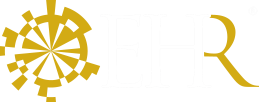CAREER MANAGEMENT
COMPANIES
Career planning is a tool to increase overall performance by aligning business strategies with the human capital in the organization. Achieving the company's objectives depends on the presence in the organization of talents who are allowed to take on ever-increasing responsibilities; thus, the need to design career paths aimed at identifying a succession of positions able to offer, to the people who occupy them, the best opportunities for skills development, necessary to reach the next positions. The analysis of roles and optimal organizational behaviors that must be implemented by the position holders are the basic element of career planning methodologies. The joint activity-behaviour approach offers the possibility of highlighting any inconsistencies between the characteristics required by the position concerned and those required by a subsequent one, belonging to the same path. Each family of subsequent positions in the career path, in fact, requires the acquisition of the skills required in the previous ones.
A career monitoring system based on skills starts, therefore, from the mapping of final and intermediate positions, passing through an ad hoc competence model, a dictionary of typical behaviors and an analysis of performance indicators. In addition, a skills reference grid, a map of the organization's career paths and an analysis aimed at defining the steps to reach the most complex positions are necessary for internal and external selection and recruitment. Another objective is the identification of training and updating activities to be planned and implemented in order to facilitate staff mobility. Finally, the identification and enhancement of key people for the company, specialists and talents, to prevent unwanted abandonment. Also following the rates and reasons for staff abandonment (including new recruits) is an activity that is part of career management.
Career management is also closely linked to remuneration policies and the performance evaluation system.

